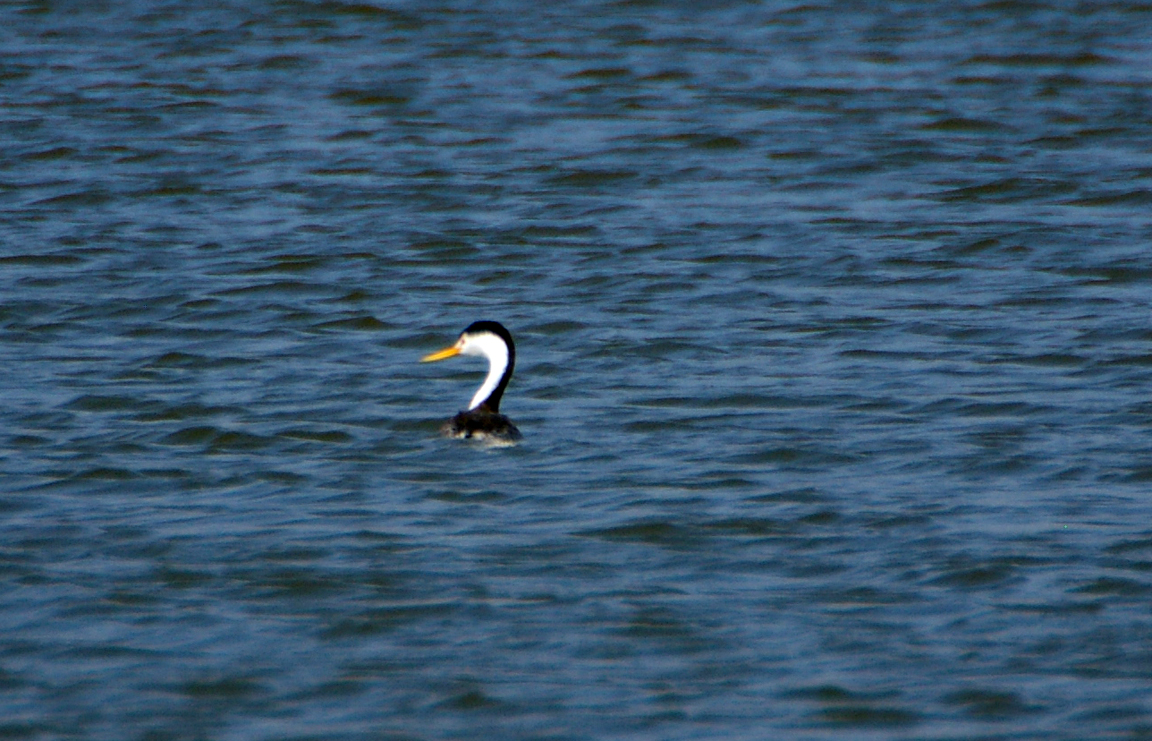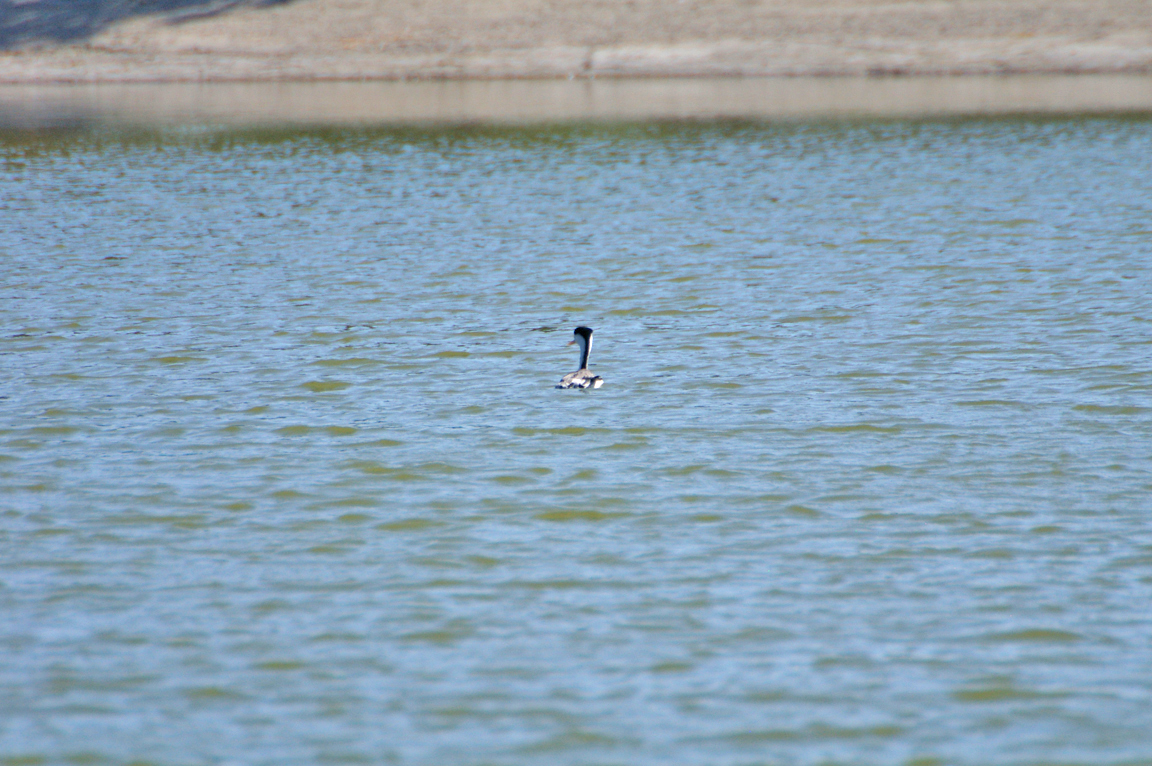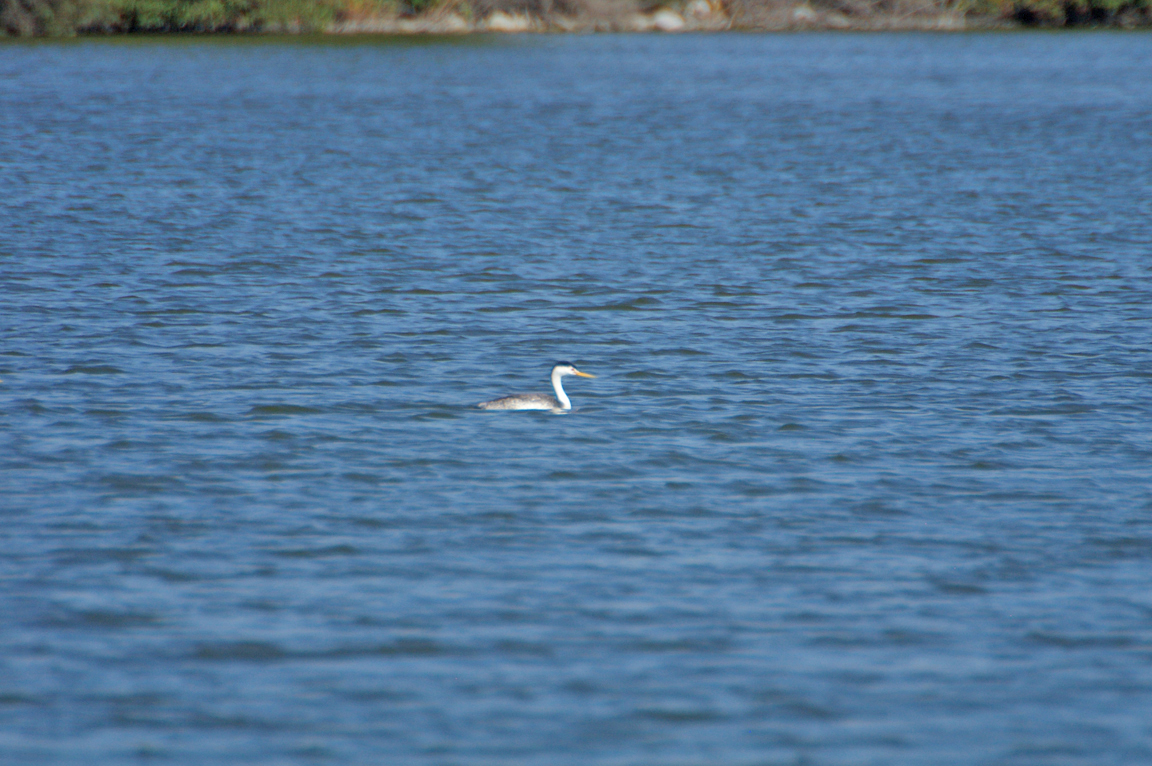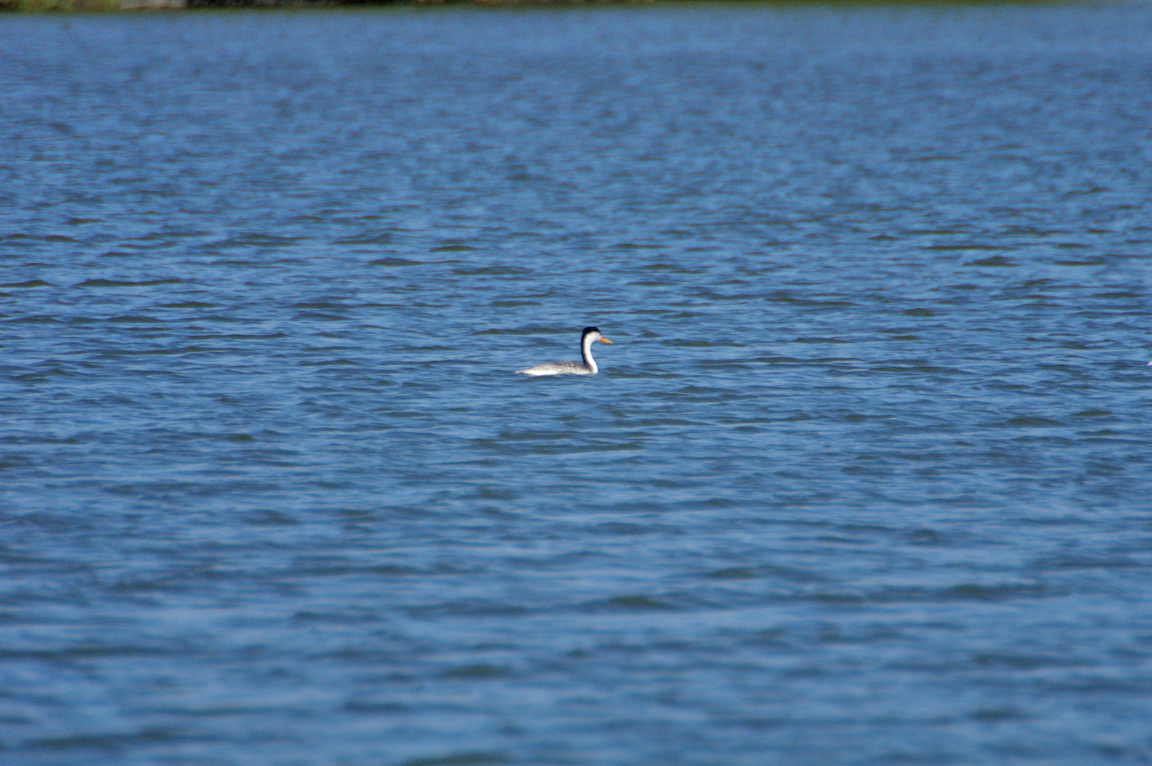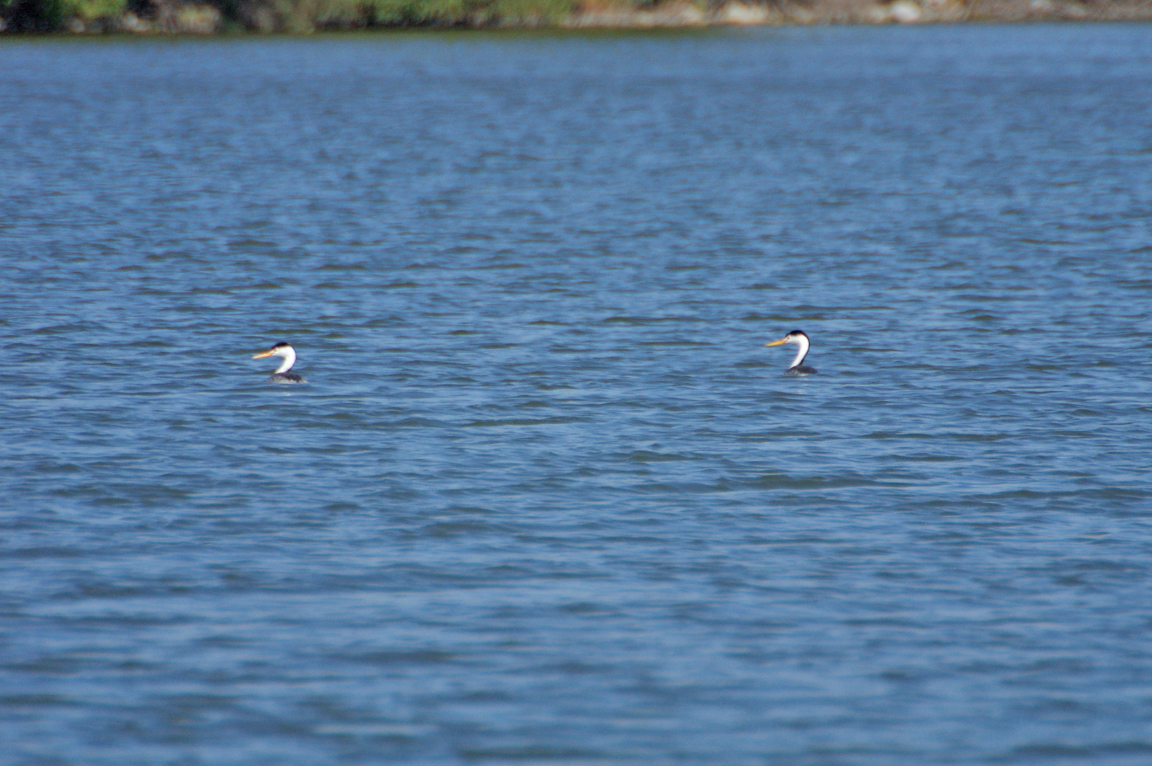|
|
|
 |
Clark's Grebe
|
| Aechmophorus clarkii | |
A white-faced version of the Western Grebe, the Clark's Grebe formerly was thought to be the same species. Differences in face and bill color keep the two grebes from interbreeding.
Interesting Information
-
First described in 1858, at the same time as the Western Grebe, Clark's Grebe was originally regarded as a distinct species and then as a color phase of the Western Grebe.
-
These two birds are once again considered separate species because they nest side by side with very little interbreeding.
-
A group of grebes are collectively known as a "water dance" of grebes.
Description
Adult Description
- Medium-sized waterbird.
- Black back and cap.
- White face.
- White neck and underside.
- Long neck.
- Long, thin bill.
Sex Differences
Sexes similar.
Immature
Similar to adult.
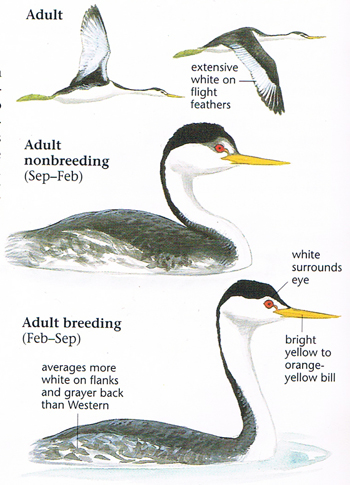
Photo taken from: The Sibley Field Guide by David Allen Sibley
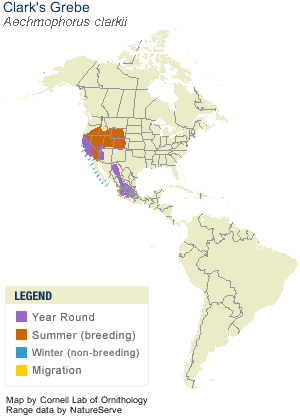
© 2003 Cornell Lab of Ornithology
|
Habitat |
|
Clark's Grebe: Breeds from British Columbia, Saskatchewan, and Minnesota south to southern California, and sparsely to Arizona, New Mexico, and Colorado. Spends winters along the coast from southeastern Alaska to California, along the Gulf coast, and on large river systems in west. Breeds on large lakes with reeds or rushes; winters mainly on shallow coastal bays and estuaries. |
|
Behavior |
|
Diet consists mostly of fish, but also takes insects and other invertebrates; sometimes eats amphibians and plants; forages by diving from the surface. |
|
Food |
|
Fish, insects and other invertebrates; sometimes eats amphibians and plants |
Taxonomy
| Kingdom: | Animalia |
| Phylum: | Chordata |
| Subphylum: | Vertebrata |
| Class: | Aves |
| Order: | Podicipediformes |
| Family: | Podicipedidae |
| Genus: | Aechmophorus |
| Species: | Aechmophorus clarkii |
| Subspecies: | Aechmophorus clarkii clarkii |
| Aechmophorus clarkii transitionalis |
Similar Species |
|
Western Grebe is extremely similar, but has black surrounding the eyes and a duller yellow or greenish bill. Winter Red-necked Grebe is gray and dingy, not bright white. Loons are shorter necked and have solidly dark wings. |
|
Bird Sound |
|
Shrill whistle and rolling croak. |
|
Eggs look like this |
|
No photos of eggs are available at this time. |

